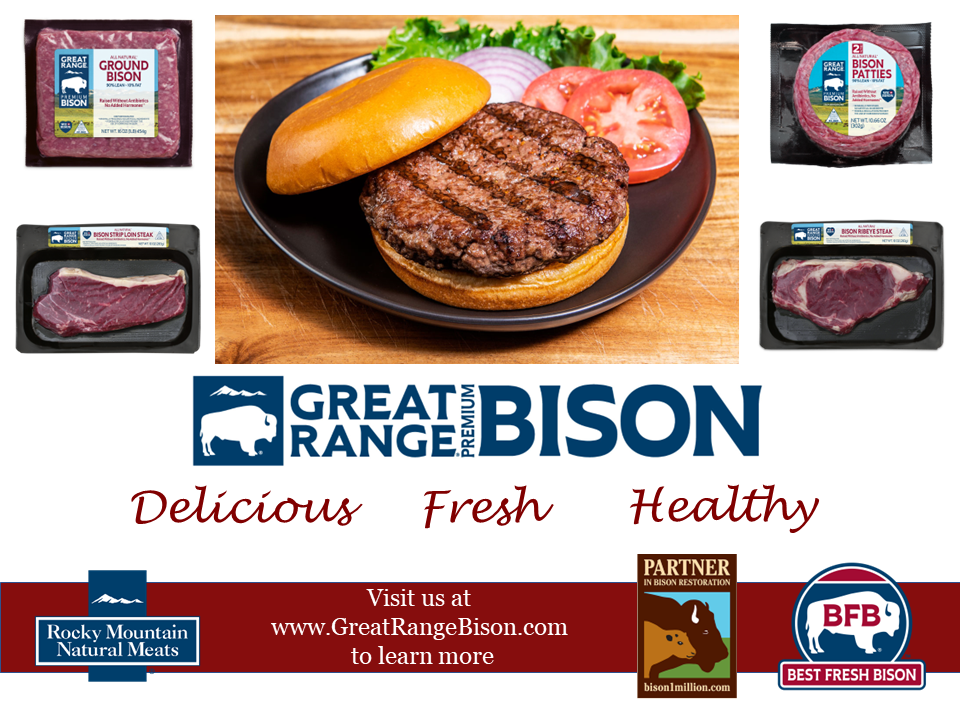How to Cook Bison
There is no reason to be buffaloed when cooking with bison. As many chefs will attest, bison is a delicious and healthy substitute in any recipe that calls for beef.
Individual cuts of bison are identical to beef. Bison can appear to be a deeper red due to the fact that bison has lower fat content, thus less marbling than beef. Because bison is lean, it will cook more quickly so it is important not to overcook bison. Overcooked bison is tough bison. Cooking bison correctly is delicious and tender bison.
Use these general guidelines when cooking bison.
Ground bison meat should be cooked to an internal temperature of at least 160°F and the juices should be clear, not red. Roasts and steaks should be cooked to an internal temperature of 145° F (medium rare) or 160°F (medium). The oven should be set at around 275°F.
- Oven broiling, move your broiler rack away from the heat about a notch lower than where you normally broil beef steaks. Expect a buffalo steak to cook one-third faster than a beef steak. Bison steaks are best when cooked rare to medium to maintain the moisture and flavor of the meat. It is not recommended to cook buffalo meat past medium. If you prefer your steak to this degree of doneness, be aware that your buffalo steak may lose some of its desirable attributes.
- Turn your oven temperature to around 275°F for bison. Plan on the roast being done in about the same amount of time as with a comparable size beef roast. We recommend using a meat thermometer indicating the internal temperature of 145° for medium rare.
- Ground bison is also leaner in general. Check the package if purchasing bison retail. You can ask your meat processor for the fat percentage you prefer if you purchase bison in bulk. Medium-rare to medium is best for a juice burger.

Bison Stew
Bison Steak
Bison Meatballs
